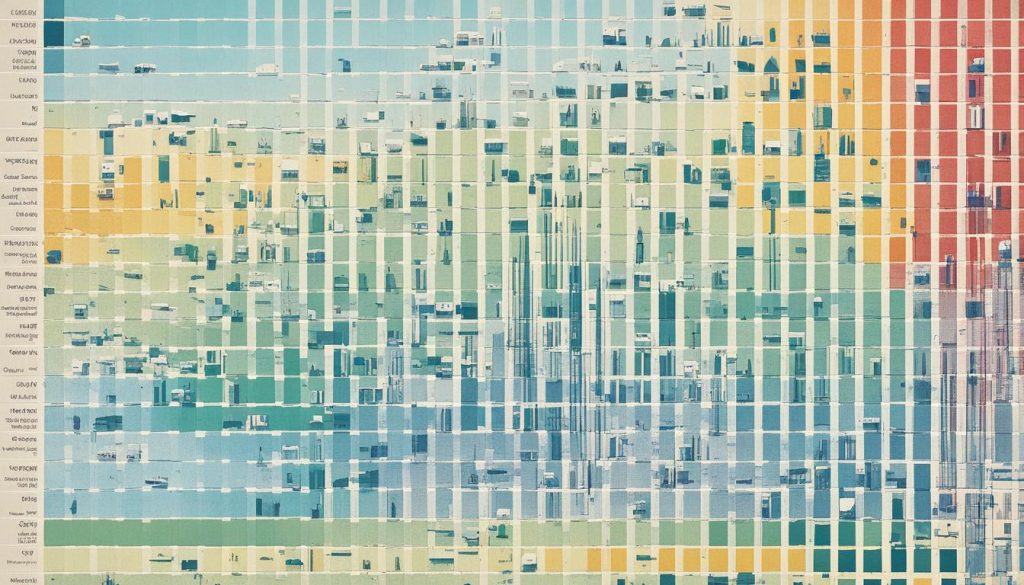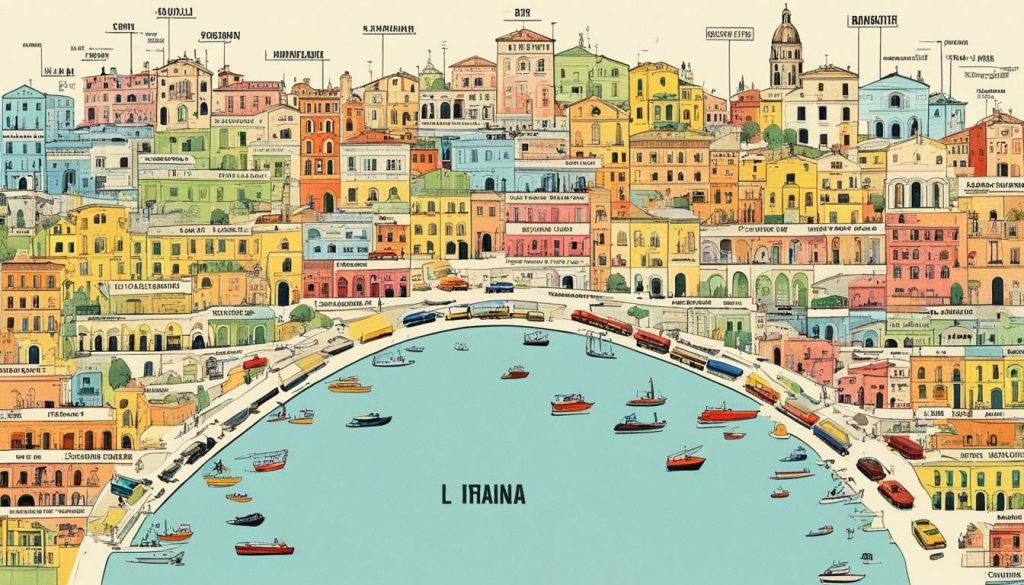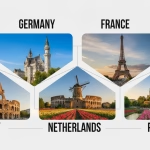The cost of living in Italy varies a lot, depending on the city. This difference is key to understanding how affordable life can be there. The average take-home pay is about €1,572 a month. But, on average, people spend about €1,796.34 a month. This shows why it’s important to know the costs in different areas of Italy.
In cities like Milan and Rome, living costs more than in the south. This shows the big differences in expenses across the country. Knowing these costs is vital for anyone living in or thinking about moving to Italy. It helps people balance their income with their spending. This way, living in Italy can be both sustainable and enjoyable.
Key Takeaways
- The cost of living in Italy varies significantly from city to city.
- An average net salary in Italy is around €1,572 per month.
- Typical monthly expenditure for Italians is approximately €1,796.34.
- Northern cities like Milan and Rome are more expensive compared to southern areas.
- Understanding city-based living costs is crucial for financial planning.
Introduction to the Cost of Living in Italy

Italy offers a unique mix of old-world charm and modern living, shaping its Italian living standards. Knowing the average salaries helps us understand the Italian cost index better. This blend attracts those looking for an affordable life in Italy.
Even though Italy is the 4th cheapest country in Western Europe, living costs vary. Big cities like Milan and Rome cost more than places like Florence and Naples. This helps people plan their budgets according to city life costs.
The average salary in Italy changes a lot. People should weigh these salaries against key expenses like rent and food. It’s crucial for enjoying life in Italy well, without spending too much.
Learning about living costs is key for anyone thinking of moving to Italy. By looking at salaries and expenses, you can understand what life really costs. This will help you make smart moves to this beautiful country.
Housing Costs Across Major Italian4 Cities

Housing costs in Italy vary greatly from city to city. Milan is on the pricier end, making it a major factor for those thinking about renting. On the flip side, some areas are much more wallet-friendly.
Rent Prices
Rent prices are higher in northern cities like Milan and Rome. Here, people often spend over 40% of their income on housing. Meanwhile, southern cities such as Palermo and Naples are kinder to your budget.
- Milan: Average monthly rent for a one-bedroom apartment in the city centre can exceed €1,200.
- Rome: Rent prices in the capital often hover around €1,000 for a similar property.
- Palermo: In stark contrast, renting the same type of accommodation might only cost around €500.
- Naples: Another affordable southern city with average rents floating near €600.
Cheapest and Most Expionate Cities
To understand Italian rent prices, note the gap between priciest and cheapest cities. Milan and Rome are at the top for high rents. But, Palermo and Naples offer more budget-friendly living, attracting those wishing to save.
In short, housing costs in Italy differ greatly by location. Milan is among the most expensive. This shows how important it is to think carefully about where to live in Italy.
Comparison of Utility Expenses in Italian Cities

The cost of living in Italy greatly depends on utility expenses. Looking into these expenses shows differences across Italian cities. This helps with budgeting. We’ll look at costs like electricity, gas, and water. Also, we’ll check out the charges for internet and mobile services in Italy.
Electricity, Gas, and Water
Utilities in Italy cover electricity, gas, and water. These can cost between €100 and €150 for a medium flat. The bills vary by city, how much you use, and your provider. For example, Milan and Rome often have higher costs.
Using less energy can lower your bills a lot.
Internet and Mobile Bills
Internet and phone bills are crucial in Italy. Companies like Vodafone and Tim offer these services. Bills range from €25 to €40 per month. This depends on what package you choose.
Urban areas usually have fast internet. Yet, prices can change based on the provider and any extra services.
Knowing about utility and connectivity costs helps with planning your move or budget. It lets you make smarter choices for your daily expenses.
Food and Grocery Prices in Italy

Learning about Italian grocery shopping can help one save money. Prices for basic items like milk, eggs, veggies, bread, and wine change in different cities. For instance, milk costs about €1 per litre and you can buy a dozen eggs for around €2.50.
- Bread: €1.50 per loaf
- Vegetables: €2-€4 per kilogram
- Wine: €5-€10 per bottle
Stores like Lidl and Aldi keep prices down, which is key in managing supermarket costs Italy. Choosing to buy fresh food from local markets or save money at discount stores affects your Italian food expenditure greatly.
Many in Italy think markets have better quality food, which changes how they shop. But discount stores are there for saving money on the grocery bill. It’s important to know the difference between price and quality for smart Italian grocery shopping.
In the end, knowing about different stores and prices helps in making good choices. This influences supermarket costs Italy and one’s Italian food expenditure.
The Cost of Living in Italy Varies Based on the City
Living costs in Italy change a lot depending on the city. There’s a big money gap between the North and South. This affects housing, food, getting around, and fun.
North vs. South
In the North, places like Milan and Turin are pricier. Their strong economies and industries push up living and working costs. Milan’s rent and property prices are some of Europe’s steepest.
The South, however, is cheaper and more laid-back. Naples and Palermo offer affordable living. The lifestyle is slower, with lower costs, but salaries might be less too.
City-Specific Factors
Costs also depend on what each city offers. Milan’s fashion and culture mean spending more. In contrast, the South has cheap historical and natural attractions. Transport costs differ too; Rome’s public transport can save you money.
It’s essential to know these differences if you’re thinking of moving to Italy. Knowing the cost of life in the North versus the South can guide your decision.













